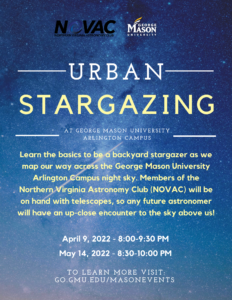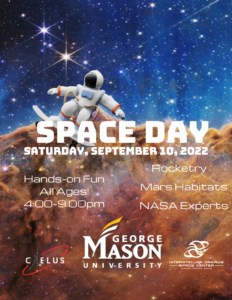The Leonids is an average shower, producing up to 15 meteors per hour at its peak. This shower is unique in that it has a cyclonic peak about every 33 years where hundreds of meteors per hour can be seen. That last of these occurred in 2001. The Leonids is produced by dust grains left behind by comet Tempel-Tuttle, which was discovered in 1865. The shower runs annually from November 6-30. It peaks this year on the night of the 17th and morning of the 18th. The waxing gibbous moon will set shortly after midnight leaving fairly dark skies for what could be a good early morning show. Best viewing will be from a dark location after midnight. Meteors will radiate from the constellation Leo, but can appear anywhere in the sky
Planning on staying up late (or waking up early) for this one. The Geminids is the “king” of the meteor showers. It is considered by many to be the best shower in the heavens, producing up to 120 multicolored meteors per hour at its peak. It is produced by debris left behind by an asteroid known as 3200 Phaethon, which was discovered in 1982. The shower runs annually from December 7-17. It peaks this year on the night of the 13th and morning of the 14th. The first quarter moon will set shortly after midnight leaving dark skies for what should be an excellent early morning show. Best viewing will be from a dark location after midnight. Meteors will radiate from the constellation Gemini, but can appear anywhere in the sky
The Ursids is a minor meteor shower producing about 5-10 meteors per hour. It is produced by dust grains left behind by comet Tuttle, which was first discovered in 1790. The shower runs annually from December 17-25. It peaks this year on the the night of the 21st and morning of the 22nd. This year the glare from the full moon will hide all but the brightest meteors. If you are extremely patient, you might still be able to catch a few good ones. Best viewing will be just after midnight from a dark location far away from city lights. Meteors will radiate from the constellation Ursa Minor, but can appear anywhere in the sky.
NOVAC’s Byron Bergert Imaging Group will hold its Not-a-Leap-Year Processing Party online on Saturday, February 27 from 10am to 1pm. As our planet’s satellite moves into its springtime prime, when the first-quarter moon will ride high in the sky, this seemed like a good opportunity to take a step sideways from our usual focus on deep sky astrophotography to do a session on lunar imaging. Our Special Guest Processor for this meeting is Tom Glenn, a skilled lunar and planetary photographer who lives in San Diego. You may be familiar with Tom’s work from his fantastic APOD of the International Space Station transiting Mars, but if you look at Tom’s Flickr site you’ll quickly see that he’s equally talented at lunar imaging, and in fact he earned his first APOD for that work. Tom images the moon with a 9.25” Celestron SCT and an ASI183 camera.
We’ll be holding this meeting online via Google Meet. Follow the link below to join the meeting (you can dial in for audio only):
Phone: 414-436-7479
PIN: 891 623 500#
We’ll open the connection about 10 minutes before the meeting time.
Details and Google Meet link TBA.

RSVP here.
Members of the public are invited to view the urban night sky over George Mason University’s Arlington Campus through the telescopes of NOVAC volunteers.
Observing will take place on the outdoor plaza in front of Van Metre Hall (Schar School of Policy and Government). Visitor Parking is available in the Van Metre Hall Garage (hourly rate). There is also metered street parking around the campus.
As a reminder please ask permission from the telescope owner before using. Please monitor your children if they’re around expensive astronomical equipment.
Don’t forget to dress warmly. Please check the weather forecast.
Note: This outdoor event is weather-dependent and may be cancelled because of significant cloud cover or precipitation.

THIS EVENT IS CANCELED AND WILL BE RESCHEDULED FOR LATER THIS SUMMER.
RSVP here.
Members of the public are invited to view the urban night sky over George Mason University’s Arlington Campus through the telescopes of NOVAC volunteers.
Observing will take place on the outdoor plaza in front of Van Metre Hall (Schar School of Policy and Government). Visitor Parking is available in the Van Metre Hall Garage (hourly rate). There is also metered street parking around the campus.
As a reminder please ask permission from the telescope owner before using. Please monitor your children if they’re around expensive astronomical equipment.
Don’t forget to dress warmly. Please check the weather forecast.
Note: This outdoor event is weather-dependent and may be cancelled because of significant cloud cover or precipitation.


